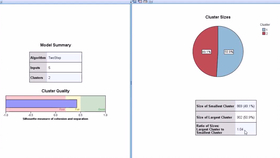Effective Strategies for Handling Inventory of Hardware Accessories
Hardware accessories are an essential part of many businesses, but managing their inventory can be a complex and time-consuming task. To effectively handle inventory of hardware accessories, businesses need to adopt several strategies. Firstly, businesses should establish clear policies for purchasing and storing hardware accessories. This includes setting guidelines for when to restock and what to reorder based on sales data. Secondly, businesses should implement a system for tracking inventory levels in real-time. This can be done through the use of barcode scanning or inventory management software. Thirdly, businesses should regularly conduct audits of their inventory to identify any discrepancies or overstocking of certain items. Finally, businesses should prioritize customer service by ensuring that hardware accessories are readily available for purchase when needed. By implementing these strategies, businesses can improve efficiency and profitability while ensuring that they have the necessary hardware accessories to support their operations.
In the world of manufacturing and assembly, hardware accessories play a crucial role in ensuring the smooth functioning of various equipment and machinery. These components include screws, bolts, nuts, brackets, pins, washers, and many more, which are used to connect, secure, or support different parts of a system. However, managing the inventory of these components can be a complex task, particularly when dealing with large quantities or diverse product ranges. In this article, we will explore some effective strategies for handling inventory of hardware accessories.
Firstly, it is essential to have a well-structured inventory management system in place. This involves accurately recording all the hardware accessories in your inventory, including their quantity, expiration date, supplier details, and location within your warehouse or storage facility. A reliable software solution can help automate this process and ensure data accuracy, reducing the chances of errors or omissions. Regular audits of your inventory can also help identify any discrepancies or issues that need to be addressed.
One common challenge in inventory management is understanding the demand for different types of hardware accessories. To address this, businesses can use various forecasting techniques, such as trend analysis, time series modeling, or regression analysis. By analyzing historical sales data or other relevant factors, you can make better-informed predictions about future demand for specific products. This allows you to optimize your inventory levels and avoid stockouts or overstocking.
Another important aspect of effective inventory management is maintaining proper stock rotation. This means regularly rotating out the oldest or less popular products in your inventory and adding new ones to keep up with changing trends or customer preferences. This helps prevent obsolescence and reduces the risk of having excess stock that may become unsold. You can use various tools or methods to determine the optimal rotation schedule for your business, depending on factors such as the lifecycle of your products, the frequency of sales, and the size of your order volume.

To further improve efficiency and reduce costs, you can also consider implementing lean manufacturing principles in your inventory management practices. Lean philosophy emphasizes eliminating waste and maximizing value by focusing on processes that add real value to customers. In the context of hardware accessories, this could involve streamlining procurement processes, optimizing production schedules, or enhancing product design for easier maintenance or recyclability. By adopting a lean approach, you can not only save on inventory costs but also create a more sustainable and efficient supply chain.
Finally, it is crucial to develop strong relationships with your suppliers and partners. By establishing clear communication channels and working together to forecast demand and manage inventory risks, you can minimize disruptions to your supply chain and ensure timely delivery of goods. You should also negotiate favorable terms with suppliers, such as longer payment terms or discounts for larger orders, to reduce the financial impact of fluctuations in raw material prices or exchange rates. Building strong partnerships can also open up new opportunities for innovation or diversification, helping your business stay competitive in an ever-changing market.

In conclusion, handling inventory of hardware accessories requires a comprehensive and strategic approach that integrates technology, data analytics, and human expertise. By implementing the above strategies and continuously refining your processes based on feedback and results, you can achieve optimal inventory performance and improve the overall profitability and sustainability of your business.
Articles related to the knowledge points of this article:
Title: Understanding the Cost of Wardrobe Hardware Accessories from Manufacturers
Title: Enjoy Discounted Prices on Hardware Accessories in Jingan District
Chengfei Hardware Fittings: Quality and Reliability for Your Projects
Title: Quality General Hardware配件, Directly from Tianjin Factory - Get it Now!
Stamping Hardware Fittings: An Essential Component for Modern Machinery
Lubrication and maintenance of the hardware fittings for sliding doors



